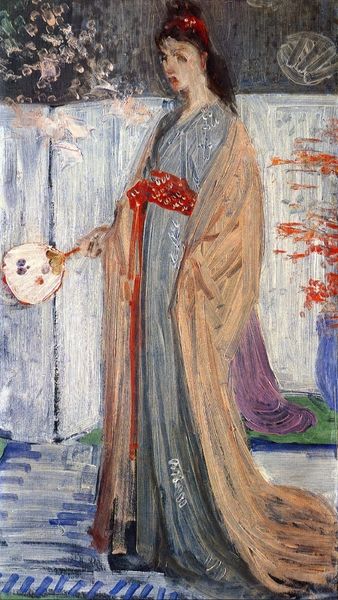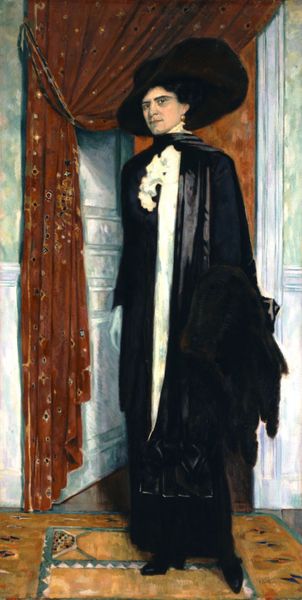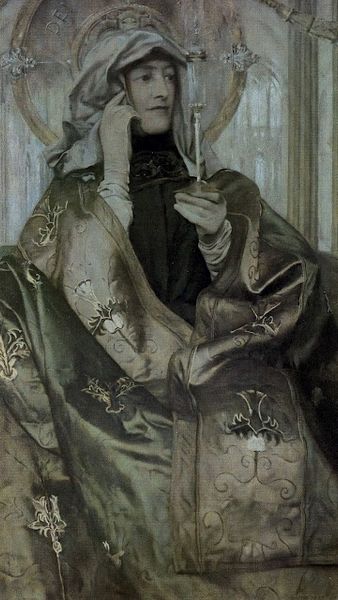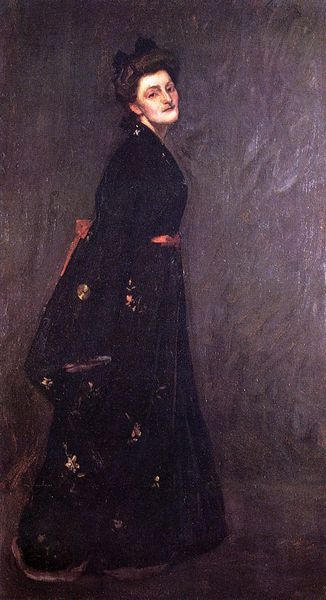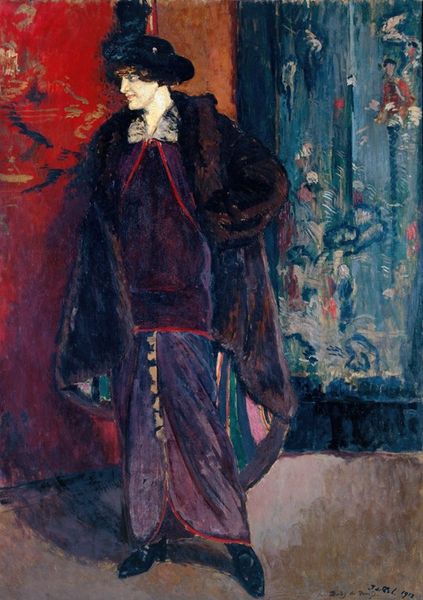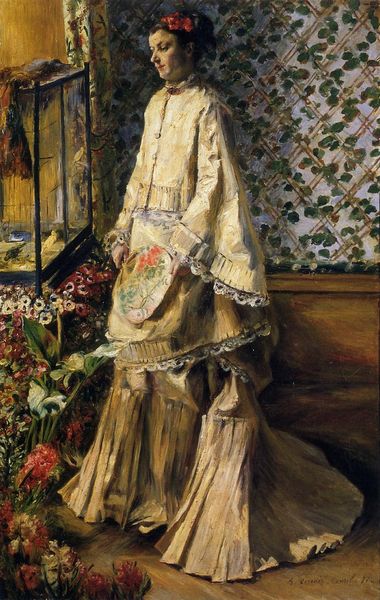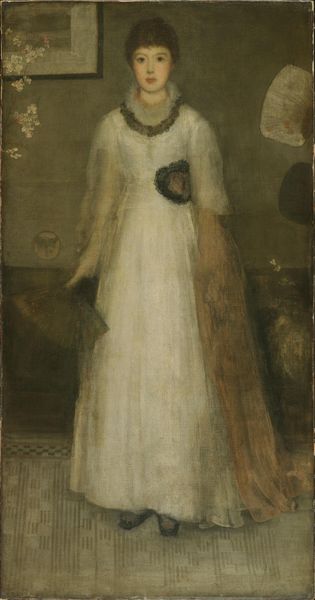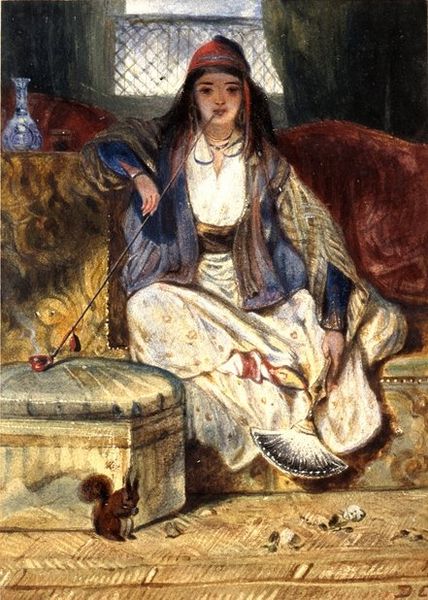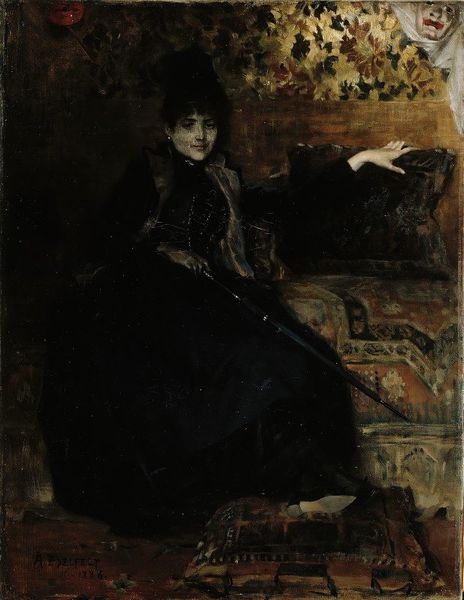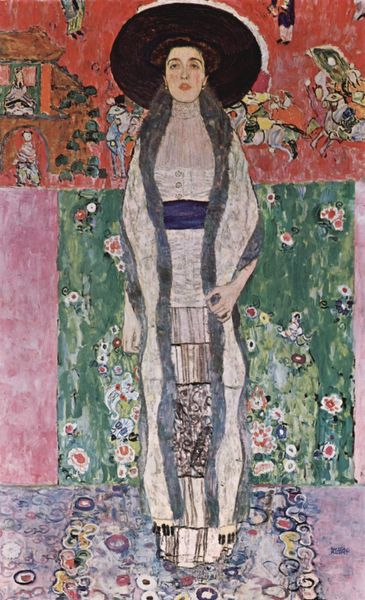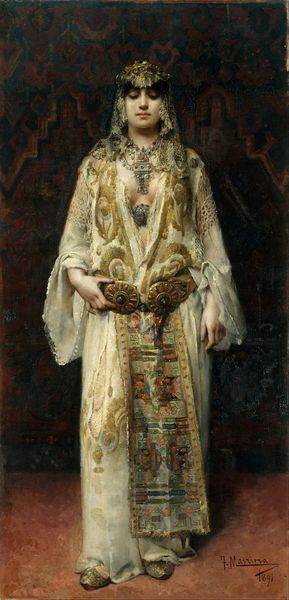
The Princess from the Land of Porcelain (Sketch for Rose and Silver) 1864
0:00
0:00
painting, oil-paint
#
portrait
#
painting
#
oil-paint
#
painted
#
figuration
#
oil painting
#
japonisme
Dimensions: 34 x 61.5 cm
Copyright: Public domain
Curator: Immediately striking is the overall muted palette. Brown, ivory, and just whispers of red, create a subtle tension in the piece. Editor: Indeed. And we're observing "The Princess from the Land of Porcelain," a preparatory sketch James McNeill Whistler created circa 1864, rendered in oil paint. Whistler's style emphasizes tonal harmonies and delicate brushwork here. What do you make of the Orientalist elements? Curator: Well, consider the silk kimono she wears, the elaborate Japanese screen behind her. This isn’t just a portrait; it’s Whistler engaging with the Western fascination for Eastern aesthetics, or Japonisme. There is this subtle echo of longing embedded in it. Editor: I see your point. He flattens the pictorial space, prioritizes decorative patterns over realistic representation, all nods to Japanese art. Note how her porcelain skin harmonizes tonally with the fan and the background screen. There's almost an unsettling, calculated harmony there. Curator: Absolutely. Her gaze is downcast, conveying an emotional remove, perhaps representing a subtle comment on the cultural appropriation or the artist’s and the model’s engagement with another culture. It makes us question what is lost or gained in translation. Editor: Yes, and that controlled composition reinforces a sense of melancholic beauty. Even the blurred details create a visual impression rather than a sharp depiction. She's not really present; instead, a phantom of idealised beauty and exoticism. Curator: Right. The kimono can also be read as more than mere exotic garb—clothing symbolizes identity and plays a complex cultural role, especially in the act of crossing between cultural boundaries. The clothing can symbolize status and power. Editor: A perfect summary—and the work rewards that detailed focus. It’s less a representation, and more of a layered interpretation through the artist's particular formal language. Curator: It's clear that beyond aesthetic appreciation, symbols in such work hold historical meanings tied to global exchanges. Editor: Precisely! Through Whistler’s selective formalism, "The Princess" embodies much more than a decorative tableau, it becomes a powerful statement of art and influence.
Comments
No comments
Be the first to comment and join the conversation on the ultimate creative platform.
